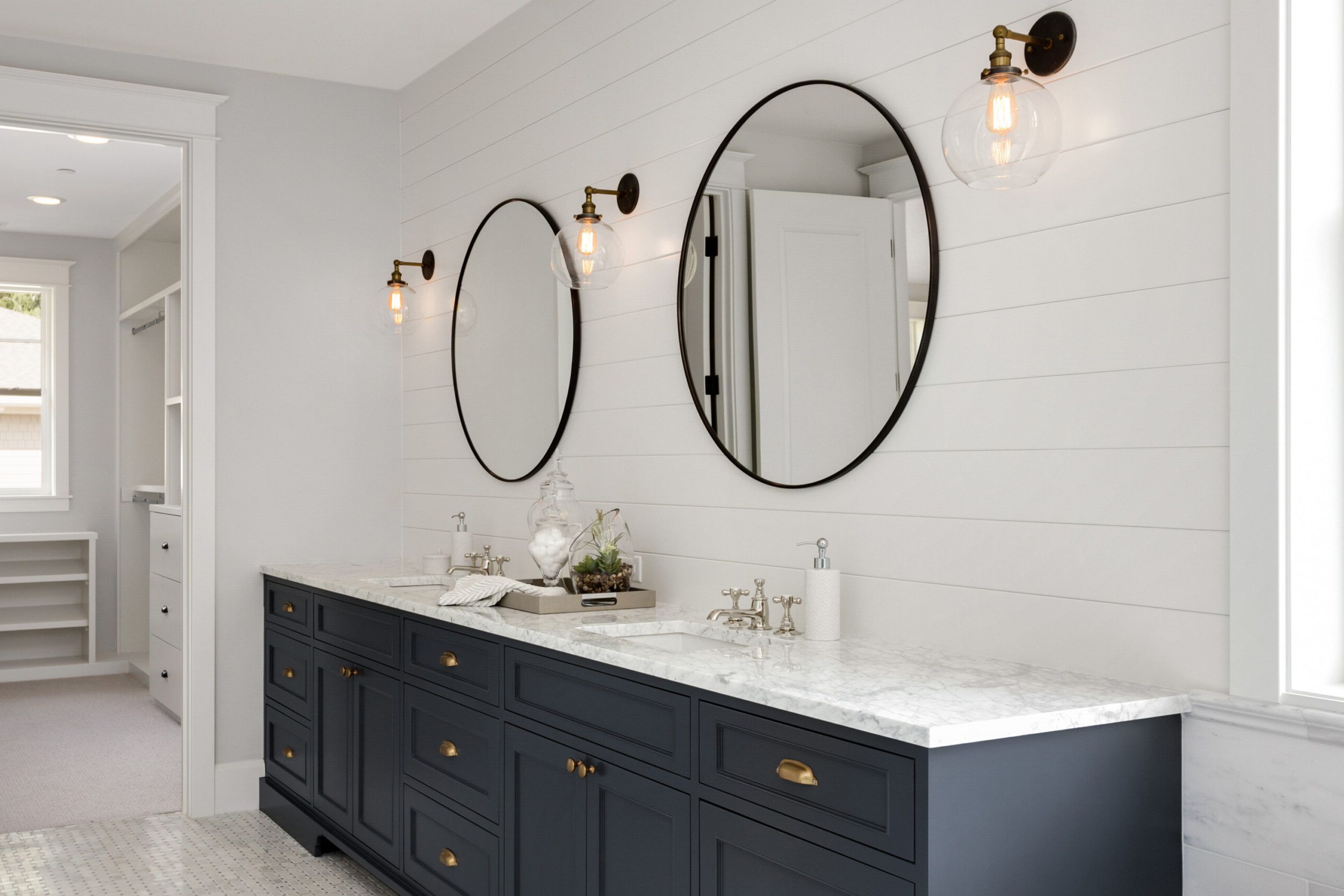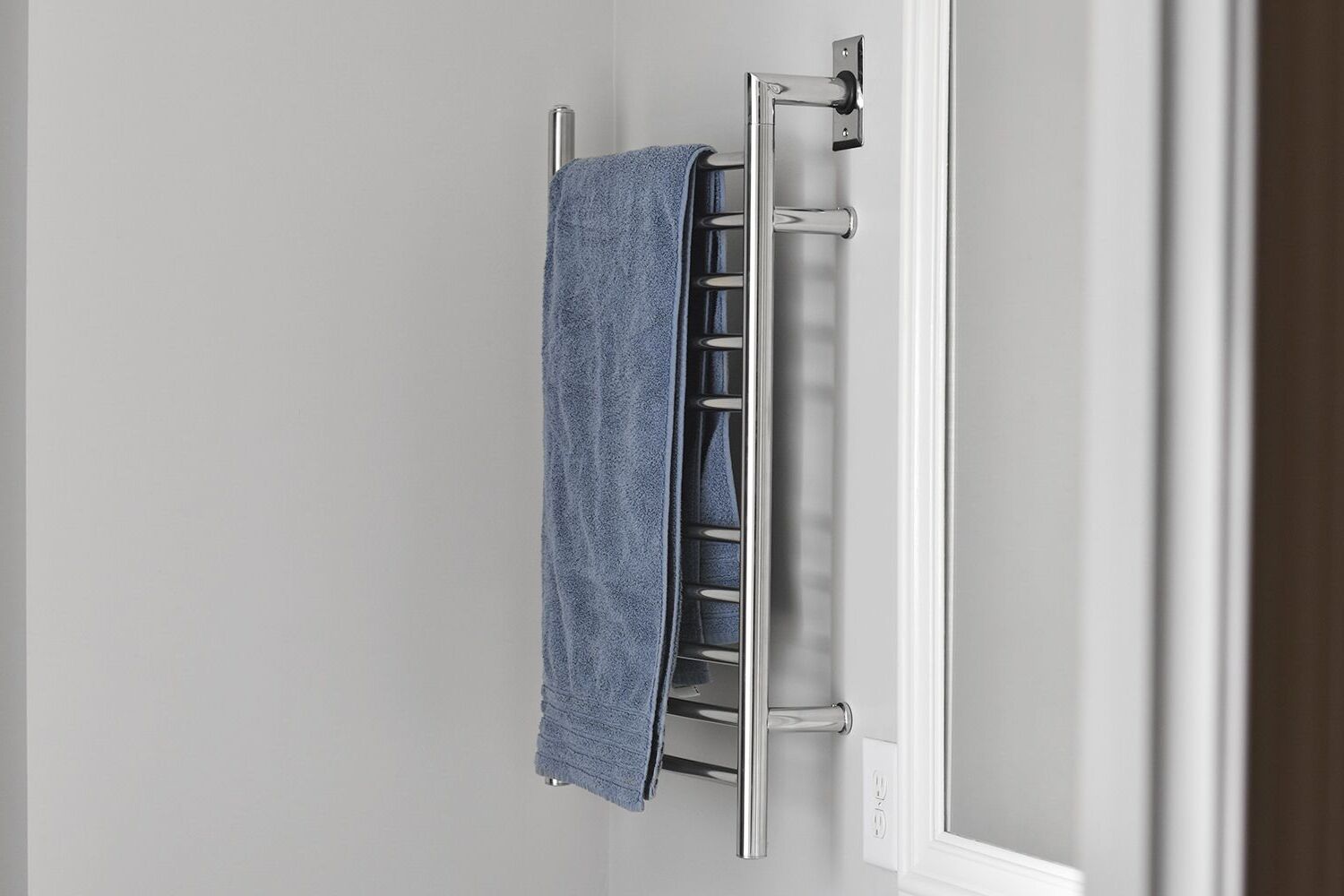Home>Ideas and Tips>How To Choose And Install The Right Bathroom Ventilation System


Ideas and Tips
How To Choose And Install The Right Bathroom Ventilation System
Modified: October 27, 2024
Learn how to choose and install the perfect bathroom ventilation system to eliminate moisture, odors, and mold, ensuring a healthy and comfortable space.
(Many of the links in this article redirect to a specific reviewed product. Your purchase of these products through affiliate links helps to generate commission for Storables.com, at no extra cost. Learn more)
Introduction
A well-ventilated bathroom is not just a matter of comfort; it's also crucial for maintaining a healthy and hygienic environment. Proper ventilation helps remove moisture, odors, and pollutants, preventing the growth of mold and mildew. In this article, we will guide you through the process of choosing and installing the right bathroom ventilation system for your home.
Understanding Bathroom Ventilation Needs
Before diving into the specifics of choosing and installing a ventilation system, it's essential to understand the unique challenges of bathroom ventilation. Bathrooms are notorious for high humidity levels due to showering, bathing, and using the toilet. This moisture can lead to mold growth, damage to walls and ceilings, and unpleasant odors.
Factors to Consider
-
Size and Layout: The size of your bathroom and its layout play a significant role in determining the type of ventilation system you need. Larger bathrooms may require more powerful systems to handle increased moisture levels.
-
Usage Patterns: If you have a family with multiple users or if you frequently use your bathroom for extended periods, you'll need a more robust ventilation system.
-
Budget: Ventilation systems can vary widely in price, from simple exhaust fans to more complex heat recovery systems. Setting a budget will help narrow down your options.
-
Noise Level: Some ventilation systems can be quite loud, which might be a concern if you plan to install it in a bedroom or living area adjacent to the bathroom.
-
Energy Efficiency: With increasing awareness about energy efficiency, many homeowners look for systems that not only ventilate effectively but also conserve energy.
-
Aesthetics: The appearance of the ventilation system is important if you want it to blend seamlessly with your bathroom decor.
Types of Bathroom Ventilation Systems
There are several types of bathroom ventilation systems available, each with its own set of advantages and disadvantages.
1. Exhaust Fans
Exhaust fans are one of the most common types of bathroom ventilation systems. They work by drawing air out of the bathroom through an exhaust duct and venting it outside.
Advantages:
- Affordability: Exhaust fans are generally inexpensive compared to other types of ventilation systems.
- Ease of Installation: They are relatively easy to install, especially if you have existing ductwork.
- Flexibility: Available in various sizes and styles to fit different bathroom layouts.
Disadvantages:
- Noise Level: Many exhaust fans can be quite loud, especially when operating at high speeds.
- Moisture Issues: If not properly installed or maintained, exhaust fans can sometimes allow moisture back into the bathroom.
2. Heat Recovery Ventilation (HRV) Systems
HRV systems are designed to recover heat from exhaust air and transfer it to incoming fresh air. This makes them particularly useful in colder climates where heat loss is a concern.
Advantages:
- Energy Efficiency: HRV systems can significantly reduce energy costs by reusing heat that would otherwise be lost.
- Year-Round Use: They provide year-round ventilation benefits by maintaining a consistent indoor air quality.
Disadvantages:
- Higher Cost: HRV systems are generally more expensive than traditional exhaust fans.
- Complex Installation: They require more complex installation processes involving ductwork and controls.
3. Energy Recovery Ventilation (ERV) Systems
ERV systems work similarly to HRV but also recover moisture from exhaust air, making them ideal for humid environments like bathrooms.
Advantages:
- Moisture Control: ERV systems excel at controlling humidity levels in bathrooms.
- Improved Indoor Air Quality: By removing pollutants and excess moisture, ERV systems enhance overall indoor air quality.
Disadvantages:
- Higher Cost: Like HRV systems, ERV systems are typically more expensive than basic exhaust fans.
- Complexity: Installation requires careful planning and execution due to the need for precise ductwork and controls.
4. Solar-Powered Ventilation Systems
Solar-powered ventilation systems harness natural sunlight to power fans or pumps, reducing reliance on electricity and lowering energy costs.
Advantages:
- Renewable Energy Source: Utilizes renewable energy from sunlight.
- Low Maintenance: Often requires minimal maintenance since it relies on natural energy sources.
Disadvantages:
- Weather Dependence: Performance can be affected by weather conditions such as cloud cover or seasonal changes in sunlight availability.
- Higher Upfront Costs: While long-term savings may be significant, the initial investment in solar panels can be higher than traditional systems.
Choosing the Right Ventilation System
With so many options available, selecting the right bathroom ventilation system can be overwhelming. Here are some steps to help you make an informed decision:
-
Assess Your Needs
- Consider factors like bathroom size, usage patterns, budget constraints, noise tolerance, and aesthetic preferences.
-
Evaluate System Types
- Weigh the pros and cons of each type mentioned above (exhaust fans, HRV/ERV systems, solar-powered systems).
- Think about how well each system addresses your specific needs regarding moisture control, energy efficiency, noise level, etc.
-
Consult Professionals
- If you're unsure about which system would work best for your bathroom or need help with installation, consider consulting professionals like HVAC technicians or contractors specializing in bathroom renovations.
-
Check Local Building Codes
- Ensure that any chosen system complies with local building codes regarding ventilation requirements for bathrooms.
Installing Your New Ventilation System
Once you've chosen your ideal bathroom ventilation system, it's time to start the installation process:
Preparing Your Workspace
-
Clear the Area
- Move any furniture or fixtures away from where you'll be working to ensure clear access.
-
Turn Off Power
- Switch off power supply to prevent electrical shocks during installation if applicable (e.g., solar-powered systems).
-
Remove Old Systems (If Necessary)
- If you're replacing an existing system with a new one, disconnect and remove old components carefully following manufacturer guidelines.
Installing Exhaust Fans
-
Mounting Bracket Installation
- Locate studs behind drywall using a stud finder tool; mount brackets securely onto these studs ensuring stability and support for fan units.
-
Connecting Ductwork
- Attach flexible ducts securely between fan units and vents ensuring no gaps where moisture could seep back into bathroom space; use clamps or tape as needed.
-
Connecting Vents
- Run vents outside through walls or ceilings ensuring proper clearance from windows/doors; seal gaps around vents using caulk/mastic materials preventing air leaks/moisture entry points.
-
Powering Up
- Reconnect power supply; test unit ensuring proper operation without excessive noise levels/moisture issues detected post-installation checks performed thoroughly by yourself/hired professionals alike!
Installing HRV/ERV Systems
-
Planning Ductwork Layout
- Carefully plan out ductwork layout considering airflow paths ensuring balanced distribution between supply/exhaust zones minimizing pressure drops/maximizing efficiency gains achieved through optimized designs implemented correctly throughout entire installation process!
-
Connecting Controls
- Integrate controls (thermostats/humidity sensors) according manufacturer specifications ensuring seamless operation under various conditions encountered daily basis!
-
Testing Performance Metrics
- Conduct thorough performance tests measuring airflow rates/humidity levels achieved post-installation verifying compliance against set standards/benchmarks established beforehand ensuring optimal results delivered consistently over time!
Installing Solar-Powered Systems
-
Mounting Solar Panels
- Position solar panels facing optimal direction receiving maximum sunlight exposure possible given geographical location constraints faced locally regionally speaking!
-
Connecting Pumps/Fans
- Connect pumps/fans directly powered via generated electricity harvested via photovoltaic cells integrated within panel assemblies themselves providing clean renewable energy source powering entire system operationally speaking!
-
Monitoring Performance Metrics
- Regularly monitor performance metrics tracking energy consumption/humidity levels maintained within bathroom space ensuring continuous optimal operation achieved consistently throughout lifespan product itself!
Maintenance Tips
Proper maintenance is crucial for extending the lifespan of your chosen bathroom ventilation system while ensuring continued effective performance delivering desired outcomes expected from outset installation phase itself!
Regular Cleaning
-
Fan Blades/Grilles
- Clean fan blades/grilles regularly removing dust/debris accumulated over time affecting airflow efficiency negatively impacting overall performance metrics observed post-cleaning activities performed diligently by yourself/hired professionals alike!
-
Ductwork
- Inspect ductwork periodically checking integrity ensuring no leaks/gaps present compromising system integrity negatively impacting indoor air quality maintained consistently throughout lifespan product itself!
-
Filters
- Replace filters periodically depending manufacturer recommendations specified within user manuals provided accompanying purchase orders placed initially setting up entire system operationally speaking!
Scheduled Inspections
-
Annual Inspections
- Schedule annual inspections conducted by certified technicians specializing field ensuring optimal performance levels maintained consistently throughout lifespan product itself!
-
Troubleshooting Common Issues
- Address common issues promptly resolving problems encountered promptly minimizing downtime experienced negatively impacting daily routines disrupted unnecessarily due unforeseen circumstances arising unexpectedly without prior warning signs exhibited beforehand indicating potential problems looming ahead requiring immediate attention/action taken accordingly!
Read more: How To Choose And Install The Right Toilet
Conclusion
Choosing and installing the right bathroom ventilation system requires careful consideration of various factors including size/layout usage patterns budget constraints noise tolerance energy efficiency aesthetics among others discussed extensively throughout this article providing comprehensive guide assisting homeowners making informed decisions regarding selection/installation processes involved therein ensuring optimal results delivered consistently over time!
By following steps outlined above meticulously ensuring all necessary precautions taken during installation phase itself along with regular maintenance activities performed diligently by yourself/hired professionals alike will help extend lifespan product itself while maintaining indoor air quality consistently throughout lifespan product itself ultimately leading healthier happier living environment enjoyed by all members household alike
Was this page helpful?
At Storables.com, we guarantee accurate and reliable information. Our content, validated by Expert Board Contributors, is crafted following stringent Editorial Policies. We're committed to providing you with well-researched, expert-backed insights for all your informational needs.















0 thoughts on “How To Choose And Install The Right Bathroom Ventilation System”